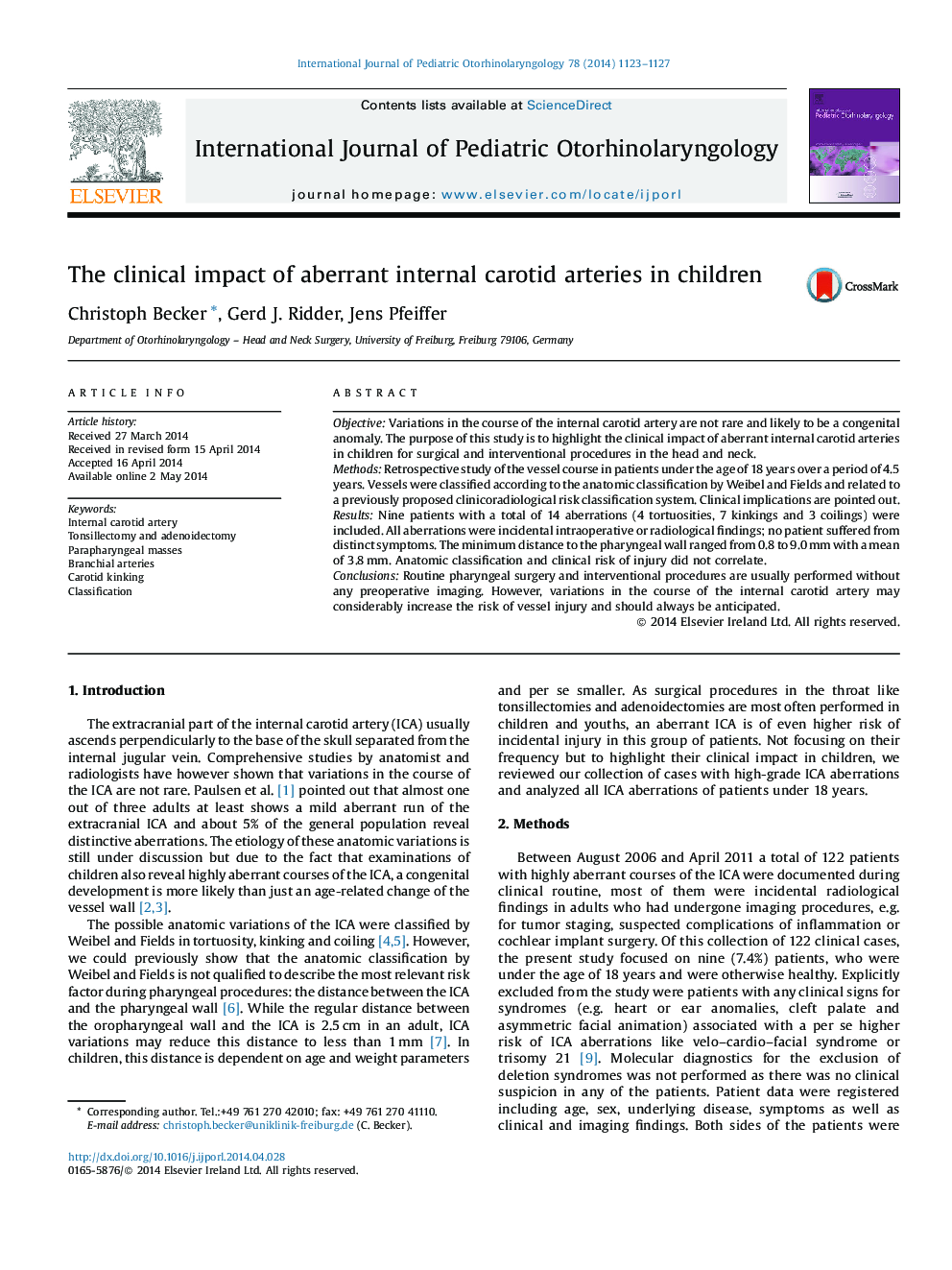| Article ID | Journal | Published Year | Pages | File Type |
|---|---|---|---|---|
| 4112576 | International Journal of Pediatric Otorhinolaryngology | 2014 | 5 Pages |
ObjectiveVariations in the course of the internal carotid artery are not rare and likely to be a congenital anomaly. The purpose of this study is to highlight the clinical impact of aberrant internal carotid arteries in children for surgical and interventional procedures in the head and neck.MethodsRetrospective study of the vessel course in patients under the age of 18 years over a period of 4.5 years. Vessels were classified according to the anatomic classification by Weibel and Fields and related to a previously proposed clinicoradiological risk classification system. Clinical implications are pointed out.ResultsNine patients with a total of 14 aberrations (4 tortuosities, 7 kinkings and 3 coilings) were included. All aberrations were incidental intraoperative or radiological findings; no patient suffered from distinct symptoms. The minimum distance to the pharyngeal wall ranged from 0.8 to 9.0 mm with a mean of 3.8 mm. Anatomic classification and clinical risk of injury did not correlate.ConclusionsRoutine pharyngeal surgery and interventional procedures are usually performed without any preoperative imaging. However, variations in the course of the internal carotid artery may considerably increase the risk of vessel injury and should always be anticipated.
